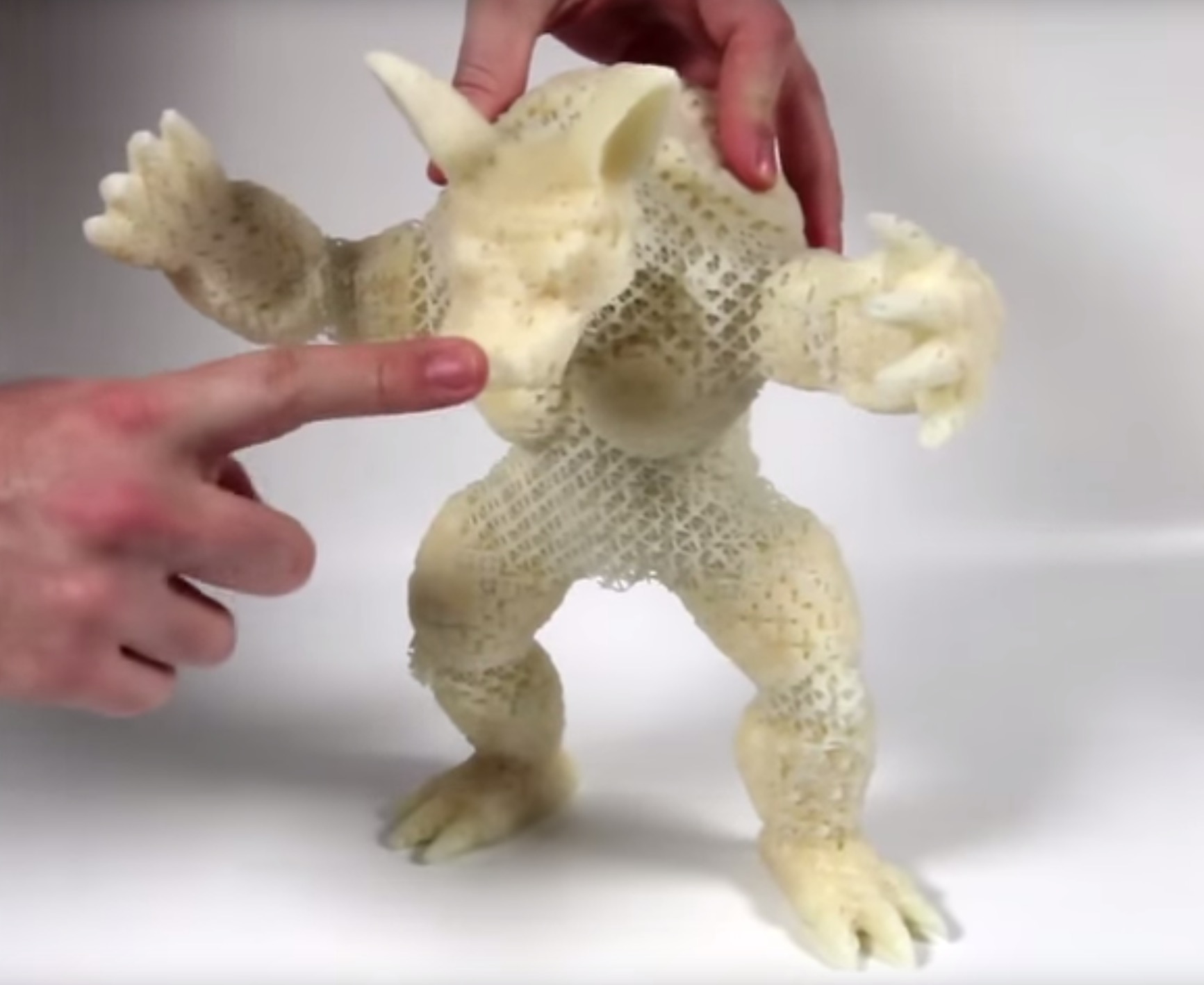New research from scientists at Disney have described ways to 3D print objects with components of varying flexibility using only solid plastic.
Their paper, entitled, “Microstructures to Control Elasticity in 3D Printing”, gives away the secret: tiny structures leveraging the bending ability of thin portions of solid plastic enable large-scale flexing.
The paper, by researchers from Disney Research, Cornell, IST Austria and ETH Zurich provides this abstract:
We propose a method for fabricating deformable objects with spatially varying elasticity using 3D printing. Using a single, relatively stiff printer material, our method designs an assembly of small scale microstructures that have the effect of a softer material at the object scale, with properties depending on the microstructure used in each part of the object. We build on work in the area of metamaterials, using numerical optimization to design tiled microstructures with desired properties, but with the key difference that our method designs families of related structures that can be interpolated to smoothly vary the material properties over a wide range.
But how, exactly, does it work? They explain further:
To create an object with spatially varying elastic properties, we tile the object’s interior with microstructures drawn from these families, generating a different microstructure for each cell using an efficient algorithm to select compatible structures for neighboring cells. We show results computed for both 2D and 3D objects, validating several 2D and 3D printed structures using standard material tests as well as demonstrating various example applications.
The complexity here is the mathematics required to generate the very complex internal structures that will exhibit just the right degree of flexibility for the object. One can imagine highly defined volumes of an object containing a specific flexibility, but this approach potentially could result in objects with continually varying flexibility, too. Here’s how it works in video form:
We think this is an extremely important development, as it may result in massively improved capabilities for inexpensive 3D printing equipment – perhaps merely with a software update. Imagine a software design tool that enables you to define, at a touch, zones of specified flexibility in your 3D model.
Then you simply print it.
There will no doubt be many constraints, not the least of which will be the resolution of the 3D printer, as we suspect more complex flexibility can be accomplished with higher resolution printing.
Let’s hope Disney moves this technology out of the labs and into the hands of 3D printers operators.
Via Disney Research



